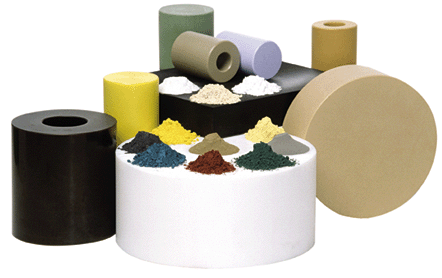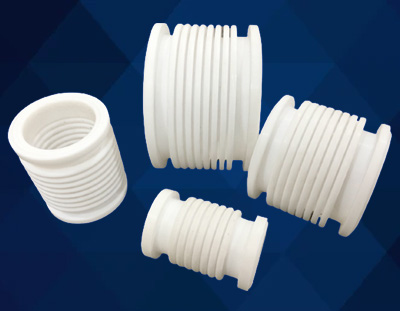PTFE, commonly known as Teflon, has revolutionized various industries with its unique properties and versatility. This article will explore PTFE characteristics and its applications in different fields.

PTFE is a synthetic fluoropolymer discovered by accident in 1938 by a chemist named Dr. Roy Plunkett at DuPont. He was experimenting with refrigerants when he stumbled upon this remarkable material. It was in the 1940s that DuPont began commercial production of PTFE under the trade name Teflon.
PTFE Characteristics: Low Friction
One of the most well-known PTFE characteristics is its low friction. This attribute has made it incredibly popular in applications where reduced friction is critical, such as non-stick cookware and bearings for machinery. The low-friction property allows objects to slide smoothly over surfaces coated with PTFE without resistance or sticking.
In addition to its low-friction quality, PTFE also possesses excellent sealing properties, making it an ideal choice for gaskets and seals. Its high melting temperature ensures it can withstand extreme heat without deforming or losing its sealing capabilities. Moreover, PTFE exhibits exceptional resistance to corrosion from chemicals and solvents, making it suitable for use in harsh environments where other materials would fail.
Long Product Life
Another advantage of PTFE is its resilience and long product life. Due to its high molecular weight and carbon-fluorine solid bonds, this material can withstand repeated compression cycles without losing its shape or effectiveness as a sealant. This longevity ensures that seals made from PTFE maintain their integrity over extended periods, reducing maintenance costs for industries relying on these components.
A critical property of PTFE relevant to sealing materials is its lack of “memory.” Memory refers to a material’s tendency to return to its original shape after deformation or compression. In contrast, when pressure is applied to a PTFE seal, it exhibits material creep, which conforms to the mating surface and creates a secure seal. This unique behavior ensures that PTFE seals adapt to irregular surfaces and maintain their sealing capabilities even under varying conditions.
PTFE Characteristics: Chemical Resistance
PTFE’s chemical resistance is also suitable for lining pipes and tanks in corrosive environments such as chemical plants or wastewater treatment facilities. The non-reactivity of this material ensures that no contamination occurs when transporting aggressive chemicals through these pipelines.
Moreover, the versatility of PTFE extends beyond traditional applications. In recent years, researchers have explored new possibilities for this synthetic fluoropolymer. For instance, PTFE-based nanoparticles have shown potential in drug delivery systems, where they can encapsulate medication and release it slowly over time.
Stringent Regulatory Requirements
Furthermore, PTFE meets stringent regulatory requirements set by organizations such as the FDA (Food and Drug Administration) and AMS (Aerospace Material Specification). It conforms to these standards regarding material thickness, ensuring its suitability for use in industries like medical and food production. The FDA-approved PTFE can be safely used in applications where direct contact with food or medicine is necessary.
The medical industry has greatly benefited from the properties of PTFE. Its biocompatibility makes it an excellent choice for implants, prosthetics, and other medical devices. Due to its low-friction characteristic, PTFE-coated catheters reduce discomfort during insertion into blood vessels or other body cavities.
Similarly, the food production industry relies on PTFE for various applications. Its non-stick property allows the easy release of food products from molds or cooking surfaces without leaving any residue behind. PTFE’s resistance to high temperatures also ensures it can withstand the heat generated during cooking without degrading or releasing harmful substances.
In addition to its applications in sealing materials, cookware coatings, and biomedical devices, PTFE also finds use in numerous other fields. It is widely used as insulation for wires and cables due to its excellent electrical properties. The low dielectric constant of this material prevents energy loss through heat generation or leakage currents.
In conclusion, PTFE or Teflon is a remarkable synthetic fluoropolymer that offers a wide range of valuable properties. Its low-friction characteristic and sealing capabilities make it indispensable in manufacturing, food production, and medical devices. The resilience and longevity of PTFE ensure its effectiveness even under extreme conditions. We can expect more innovative applications for this versatile material as technology advances.

